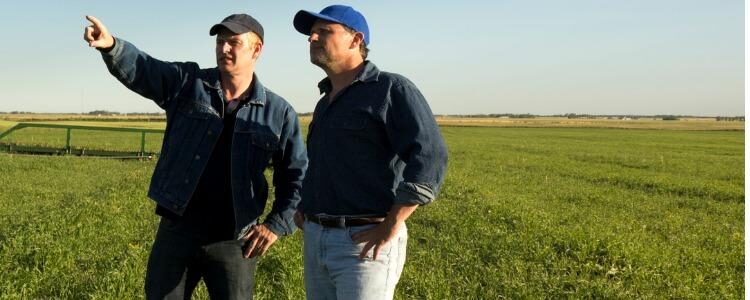Many farmers and ranchers stand to benefit from tax law changes brought about by 2017’s Tax Cuts and Jobs Act (TCJA). Numerous changes have been made in the areas of accounting rules and depreciation. Here are some of those changes, along with details about how they may impact planning for your farm or ranch operations in the coming year.
Indefinite Carry-Forward for Net Operating Losses
Net operating losses can now be carried forward indefinitely – as opposed to 20 years under the pre-TCJA rules. However, the loss deductions are now limited to 80 percent of taxable income, and they can be carried back for only two years (in comparison to five years prior to the TCJA).
Multiple Tax Law Changes to the Depreciation Deduction
The new provisions changed how farmers and ranchers depreciate their farming business property. Below is a list of ways the changes to depreciation are affected for this tax year:
-
- New farming equipment and machinery is five-year property. This means that for property placed into service after Dec. 31, 2017, the recovery period is shortened from seven to five years for machinery and equipment.
- The shorter recovery period does not apply to grain bins, cotton ginning equipment, fences, and other land improvements.
- Used equipment remains seven-year property.
- The 150 percent declining balance method on farm property:
- is not required for property used in a farming business and placed in service after Dec. 31, 2017.
- is required for property that is 15 or 20 years old to which the straight-line method does not apply and for property that the taxpayer elects.
- 100% first-year bonus depreciation on equipment:
- New and certain used equipment acquired and placed in service after September 27, 2017 qualifies for 100 percent first-year bonus depreciation for the tax year in which the property is placed into service.
- Increased max deduction and phase-out threshold on Section 179 property:
- A taxpayer may elect to expense the cost of any Section 179 property and deduct it in the year the property is placed in service. The maximum deduction was increased to $1 million. The phase-out threshold was also increased from $2 million to $2.5 million. (Amounts will be adjusted for inflation for taxable years beginning after 2018.)
- The bonus depreciation percentage was increased to 100 percent for qualified property acquired and placed in service after Sep. 27, 2017.
- The definition of property eligible for 100 percent bonus depreciation was expanded to include used qualified property acquired and placed in service after Sep. 27, 2017 (several factors are used to determine whether the used qualified property is eligible).
- Farming businesses that elect out of the interest deduction limit must use the alternative depreciation system to depreciate any property with a recovery period of 10 years or more.
- New farming equipment and machinery is five-year property. This means that for property placed into service after Dec. 31, 2017, the recovery period is shortened from seven to five years for machinery and equipment.
Tax Law Changes: Increased Qualified Business Income Deduction
Businesses may now be eligible for a 20 percent deduction under the new tax law. Good news is that the deduction can be taken in addition to the standard deduction or itemized deductions. Below are some rules regarding its applicability:
- The deduction is for up to 20 percent of qualified business income from a qualified trade or business.
- The deduction may apply to individuals, trusts and estates with qualified business income, qualified REIT dividends, or qualified PTP income.
- In certain cases, patrons of horticultural or agricultural cooperatives may be required to reduce their deduction.
- The deduction is subject to multiple limitations, such as the type of trade or business, the taxpayer’s taxable income, the amount of W-2 wages paid with respect to the trade or business, and the unadjusted basis immediately after the acquisition of qualified property held by the trade or business.
Eligibility Change for Accounting Method Usage
Most farm corporations and partnerships are now eligible to use the cash method of accounting for tax purposes.
Only the following farm businesses are not eligible to use the cash method of accounting:
• A corporation that has gross receipts of more than $25 million.
• A partnership with a corporation as a partner (if that corporation has gross receipts of more than $25 million).
• A tax shelter.
Please keep in mind, these are only a few of the changes that may impact your farming or ranching operations. Your tax expert can determine the new provisions’ impact on your agribusiness, and how to apply the new rules in ways that can maximize your situation and capture optimal tax benefits, as well as avoid potential obstacles.
Additionally, due to the later release of tax filing software by the IRS, an extension will most likely be necessary for virtually all filers.
Should you have any questions about tax preparation, making optimal determinations, or filing an extension, contact a K·Coe Isom tax expert.





